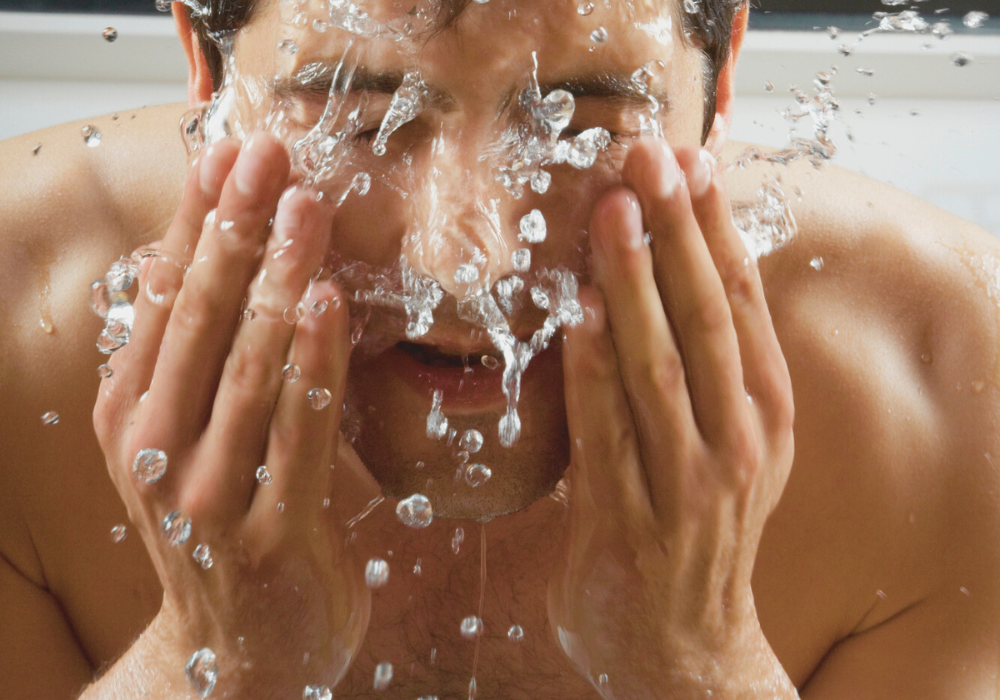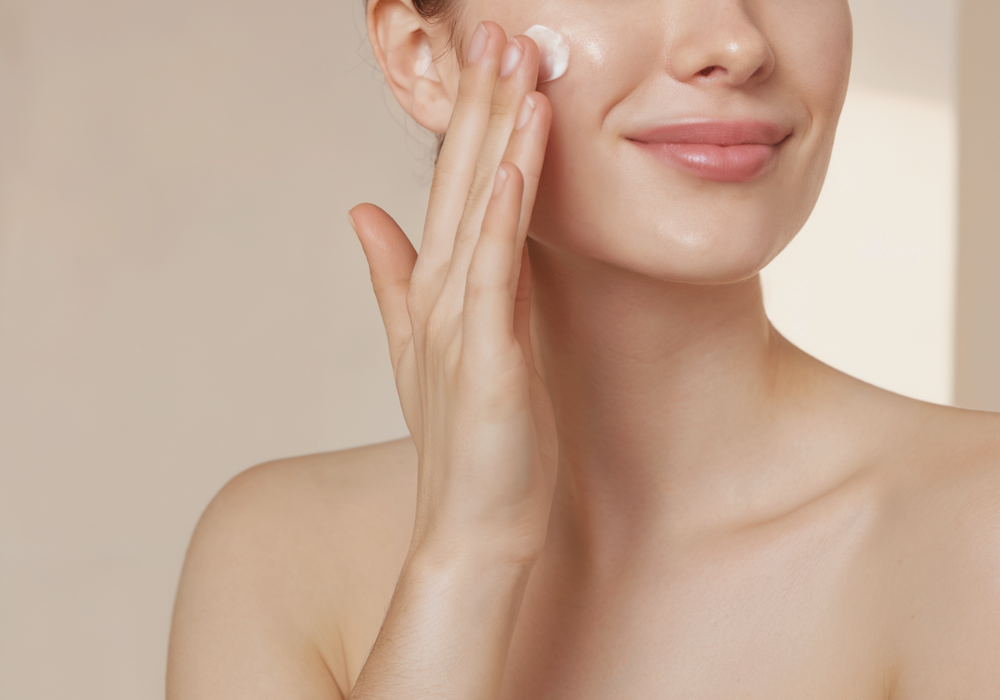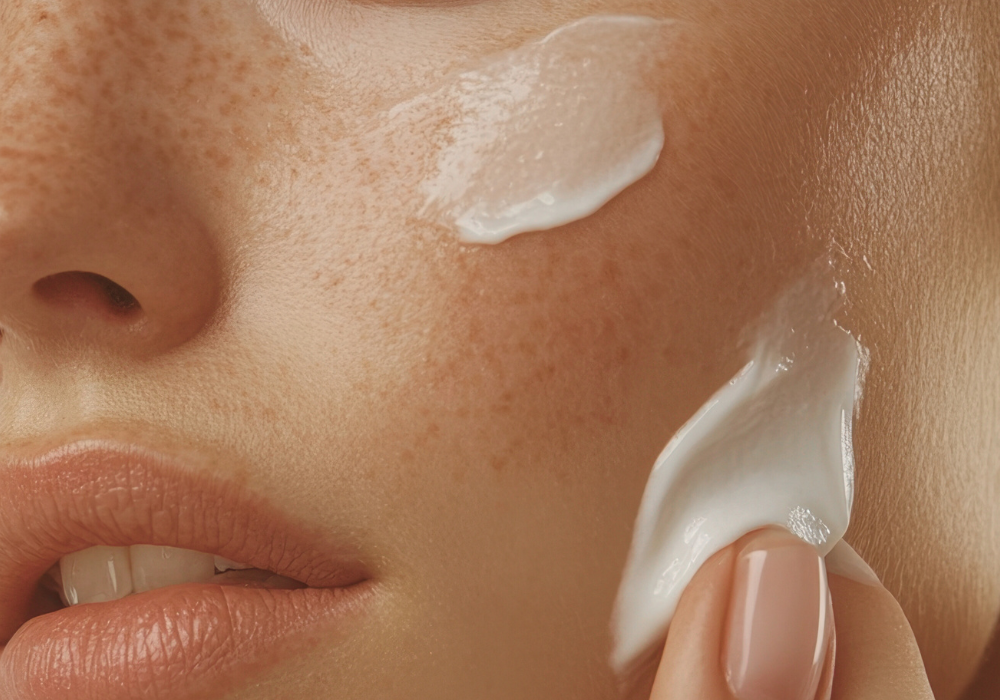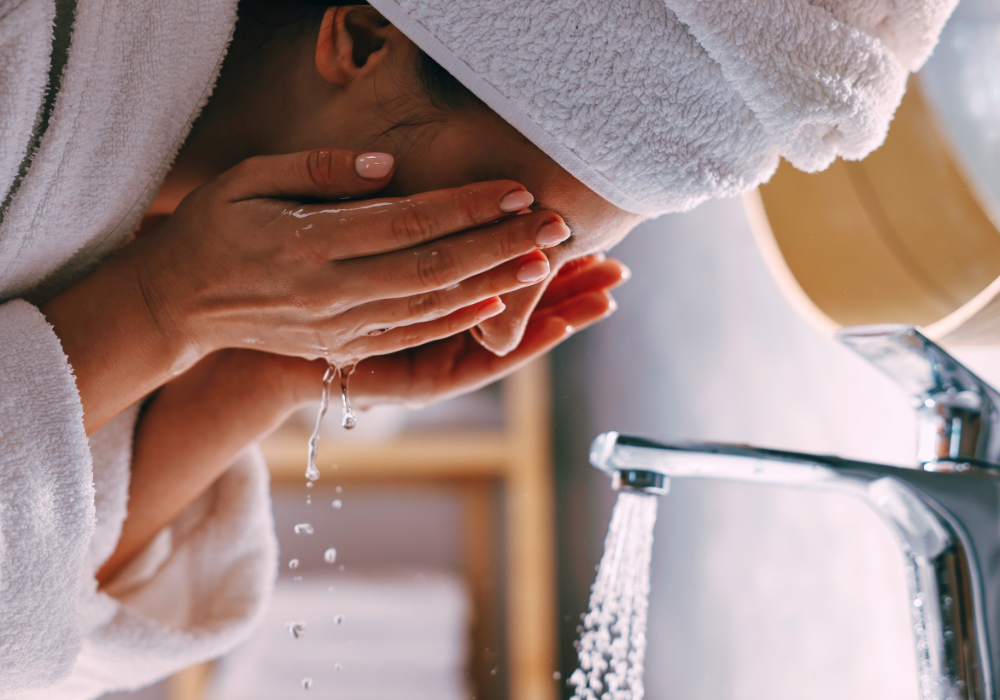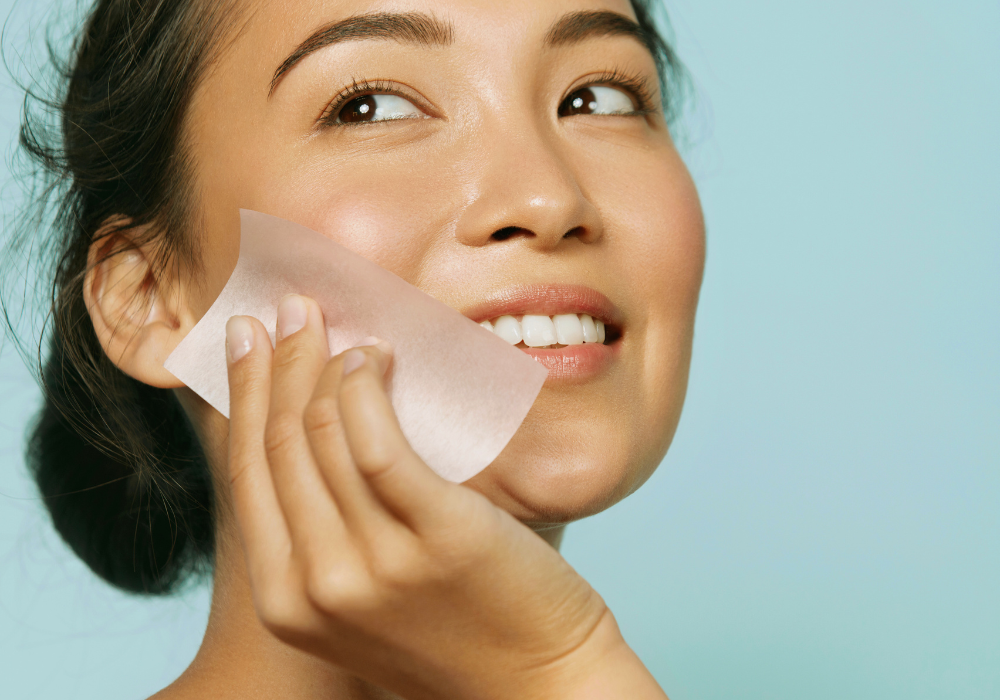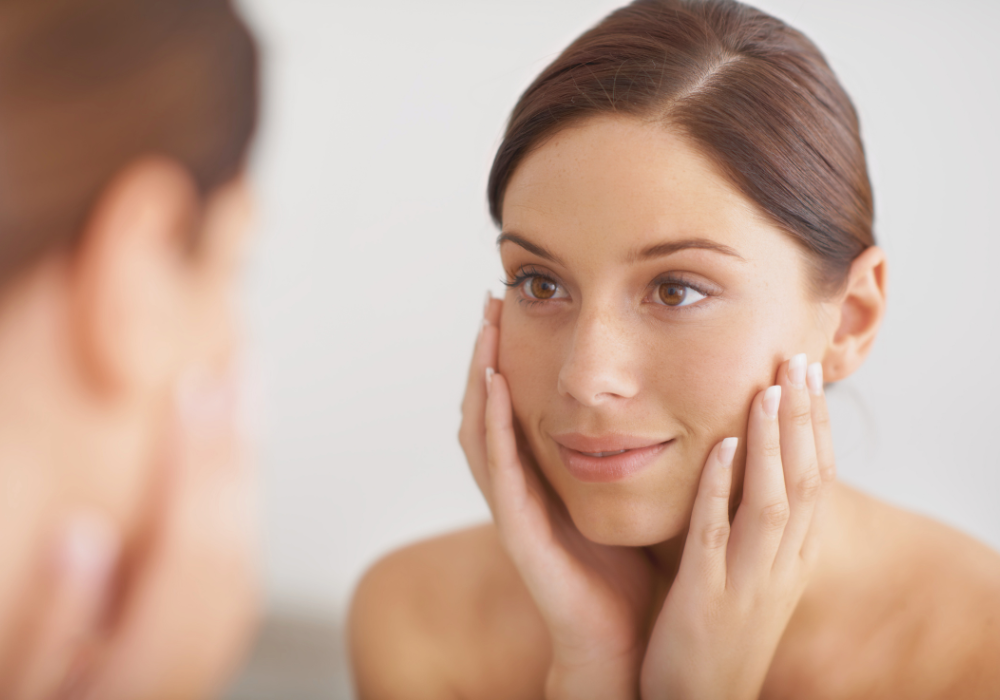Jacob Elordi's clear complexion on red carpets and in Euphoria doesn't happen by accident. The Australian actor represents a shift happening across men's grooming—simple, consistent routines focused on skin health rather than complicated multi-step regimens. While celebrity routines provide inspiration, the real takeaway is that effective skincare comes down to three essentials: cleansing, hydration, and protection. Men's grooming habits are evolving, reflecting how actors like Elordi have normalized men's skincare as basic self-care. Whether you're dealing with heavy makeup, studio lighting, or just want healthier skin, a multifunctional exfoliating cleanser that handles cleansing, exfoliation, and hydration in one step simplifies your routine without sacrificing results.
Professional actors face unique skin challenges—long hours in makeup, harsh lighting, irregular sleep schedules. What works for them often translates well for anyone seeking clear, balanced skin. The key is understanding which principles to adopt and how to adapt celebrity-inspired habits to your own skin type, budget, and lifestyle.
Key Takeaways
-
Simple three-step routines (cleanse, moisturize, SPF) deliver better results than complex regimens because consistency matters more than product count
-
Men's skin is generally thicker and produces more sebum than women's, but the same fundamental care approach works—just with appropriate formulations
-
Daily sunscreen use significantly reduces melanoma risk and visible signs of photoaging, making sun protection the single most effective anti-aging measure
-
Visible improvements in texture and hydration typically appear within 4-6 weeks of consistent use as skin completes its natural renewal cycle
-
Celebrity routines often exclude professional treatments like facials and lasers—focus on sustainable daily habits you can maintain long-term
What We Know About Jacob Elordi's Skincare Routine
Celebrity skincare content often mixes sponsored partnerships with actual habits, so it's worth focusing on verified principles rather than specific product lists. Elordi, like many actors working in film and television, deals with heavy makeup application during production—emphasizing the need for protective skincare.
The common thread in professional actors' approaches is simplicity paired with quality. Rather than ten-step regimens, they focus on removing impurities thoroughly, maintaining hydration, and protecting skin from environmental damage.
Core principles from professional skincare routines:
-
Gentle cleansing within 30 minutes of removing makeup to prevent pore congestion
-
pH-balanced products that maintain skin barrier function
-
Consistent application morning and evening, regardless of visible concerns
-
Sun protection during outdoor filming and daily life
This shift reflects how celebrity transparency around grooming has reduced stigma. The visible results you see on screen come from consistent habits maintained over months and years, not quick fixes. Professional makeup artists emphasize that skin quality determines how well makeup applies and photographs—actors have a professional incentive to maintain healthy skin through daily cleansing and hydration.
Why a Simple Skincare Routine Works Better Than Complex Multi-Step Regimens
The skincare industry pushes elaborate routines, but research shows simpler approaches win on adherence and results. Simpler routines consistently show higher adherence rates than complex multi-step regimens.
Consistency beats complexity because skin responds to regular care, not occasional intensive treatments. Your skin barrier—the protective outer layer—functions best with steady support rather than constant product rotation.
The Science Behind Fewer, Better Products
Multifunctional formulations consolidate benefits without overwhelming skin. When you layer five or six products, you increase the risk of ingredient interactions, pH disruption, and barrier compromise.
Your skin's natural pH sits around 4.5-5.5. Every product you apply shifts that balance temporarily. Fewer products mean less disruption and faster recovery to optimal function.
Benefits of streamlined routines:
-
Reduced risk of irritation from ingredient incompatibility
-
Lower cost per month compared to multi-product systems
-
Easier to identify what's working or causing issues
-
Less time required for morning and evening application
-
Better compliance over weeks and months
The Exfoliating Daily Cleanser exemplifies this approach—triple-action hydroxy acids handle exfoliation, charged hyaluronic acid provides hydration, and the formula maintains skin's natural pH, eliminating the need for separate exfoliants and toners in one 20-30 second application.
How Consistency Drives Visible Results
Skin cells turn over approximately every 28 days in younger adults, though this slows with age. Consistent product use throughout multiple cell cycles allows active ingredients to work through multiple cell generations, compounding benefits.
Sporadic use—even of excellent products—interrupts this process. You're essentially restarting every time you skip several days, never building the cumulative effects that create visible change.
Consistent skincare improves measurable hydration and texture within weeks of daily application. That improvement requires uninterrupted use, not perfect products used occasionally.
Men's Skincare Products: What to Look For and What to Avoid
The men's skincare market continues to grow rapidly, but larger market size doesn't automatically mean better products. Many "men's" products rely on gendered marketing rather than formulation differences that address actual skin needs.
Many men report they would use more skincare products if they better understood benefits and application methods. The barrier isn't disinterest—it's confusion created by overcomplicated marketing and unclear product positioning.
Red Flags in Men's Skincare Marketing
Certain marketing tactics signal products designed for impulse purchase rather than effectiveness. Watch for these warning signs:
Extreme masculinity branding: Aggressive packaging, overpowering fragrance, and vague "for men" claims without explaining why formulations differ from standard products. Skin biology varies more by type (oily, dry, sensitive) than by gender.
Multi-purpose vagueness: "Face, hair, and body wash" products rarely excel at any single function. Your face needs gentler care than your body, and hair requires different pH and surfactants than skin.
Unclear ingredient lists: If you can't easily find the full ingredient list or active ingredient percentages, that's a red flag. Quality brands disclose formulations transparently.
Overpriced basics: Premium packaging and celebrity endorsements often inflate prices on basic formulations. Check ingredient lists against less expensive alternatives—you may find identical formulas.
Why Gender-Neutral Formulas Work Better
Skin concerns transcend gender. Oily skin, dry patches, sensitivity, and aging affect everyone—addressing these issues requires appropriate ingredients, not gendered marketing.
Men's skin is generally thicker and produces more sebum, but that doesn't mean every man needs oil-control products. Individual variation within genders exceeds the average differences between them.
What actually matters in skincare:
-
Skin type: Oily, dry, combination, or normal
-
Specific concerns: Acne, sensitivity, aging, hyperpigmentation
-
Ingredient concentrations: Active percentages determine effectiveness
-
pH balance: Products formulated at skin's natural pH (4.5-5.5)
-
Quality standards: Vegan, cruelty-free, sulfate and paraben-free
Science-backed formulations work for all genders because they address skin biology, not marketing demographics. A cleanser formulated at proper pH with effective actives performs equally well regardless of who uses it.
For those building a men's skincare routine, focus on products with transparent formulations and clinical backing rather than aggressive masculine branding.
How to Build a Daily Skin Care Routine at Home in Under 5 Minutes
Time scarcity is the most common barrier to consistent skincare. Simpler routines show significantly higher adherence than complex multi-step regimens because they're actually sustainable long-term.
Five minutes covers a complete morning or evening routine with time to spare. The key is using multifunctional products that consolidate benefits.
AM Routine: 2 Minutes to Protected Skin
Morning routines remove overnight oil and prepare skin for the day ahead. Speed matters here—most people rush mornings.
2-minute morning routine:
-
Cleanse (45 seconds): Massage cleanser onto damp face and neck, rinse thoroughly
-
Moisturize (30 seconds): Apply while skin is still slightly damp to lock in hydration
-
Protect (45 seconds): SPF 30+ broad-spectrum sunscreen as final step
That's it. Three products, two minutes, complete protection and hydration.
If you want to add a treatment step, vitamin C or antioxidant serum fits between cleansing and moisturizing. This adds about 30 seconds, bringing total time to 2.5 minutes.
PM Routine: 3 Minutes to Overnight Recovery
Evening care requires slightly more time for thorough cleansing, especially if you wear sunscreen or work in polluted environments.
3-minute evening routine:
-
Cleanse (60 seconds): Double cleanse if wearing makeup—oil-based first, then water-based. Single cleanse if not.
-
Treat (45 seconds, optional): Apply retinoid or targeted treatment 2-3x weekly
-
Moisturize (45 seconds): Richer formula than morning if you have dry skin
Professional makeup artists recommend actors cleanse within 30 minutes of removing makeup to prevent pore congestion. Even if you don't wear makeup, removing sunscreen and daily buildup prevents breakouts and dullness.
The Exfoliating Daily Cleanser requires just 20-30 seconds of circular massage on damp skin, making it ideal for time-efficient routines. The triple-action hydroxy acids handle daily exfoliation automatically—no separate treatment step needed.
For frequent travelers, TSA carry-on approved 60ml sizes eliminate the hassle of transferring products or checking bags. Auto-delivery every 8 weeks means never running out of your essential first step.
Frequently Asked Questions
Can men and women use the same skincare products?
Yes. Skin concerns matter more than gender. While men's skin is generally thicker and produces more sebum, individual variation within genders exceeds average differences between them. Choose products based on your skin type and specific concerns rather than gendered marketing.
What's the difference between AHA, BHA, and PHA exfoliants?
AHAs (like glycolic acid) brighten surface skin. BHAs (like salicylic acid) penetrate pores to clear oil and debris. PHAs (like gluconolactone) exfoliate gently while hydrating, ideal for sensitive skin. Combining all three provides comprehensive renewal without irritation.
How long should I wait between applying different skincare products?
Allow 30-60 seconds between layers for absorption. Water-based serums need about 30 seconds; thicker creams may need a full minute. Apply moisturizer within 3 minutes after cleansing while skin is slightly damp to lock in hydration.
Should I change my skincare routine seasonally?
Adjust product weights with climate changes but keep core steps consistent. Use richer moisturizers in winter, lightweight gel formulas in summer. Your cleanser, sunscreen, and exfoliation approach typically remain constant year-round.
When should I apply retinoids if I'm using acids in my cleanser?
Apply retinoids in the evening after cleansing, not simultaneously with acid treatments. If your cleanser contains gentle daily acids, use it morning and evening. Reserve retinoid application for 2-3 evenings weekly initially, gradually increasing as tolerance builds.
